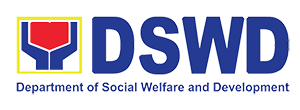A senior official of the Department of Social Welfare and Development (DSWD) shared on Thursday (November 9) the innovations made by the agency for better outcomes in the implementation of the Oplan Pag-Abot project during the Thursday Media Forum at the DSWD New Press Center in Quezon City.
“One of the important aspects or components of this program ay ang digital aspects nito,” Undersecretary for Innovations Edu Punay told members of the media who regularly cover the DSWD.
(One of the important components of this program is its digital aspect.)
Oplan Pag-Abot, an initiative of the DSWD under Secretary Rex Gatchalian, is a crucial effort of the national government aimed at reaching out to families and individuals staying or residing on the streets and providing them with support and appropriate interventions.
Through digital innovation, Undersecretary Punay shared that the reached-out individuals were registered in the national identification system of the Philippine Statistics Authority (PSA) and issued with an identification card, providing them a better chance to access other government services.
“Ito pong ID na ito very crucial… Requirement po kasi itong ID kapag hihingi tayo ng tulong sa pamahalaan, para sila ay maka-access sa government services,” Usec. Punay said.
(The ID is very crucial… It is a requirement when seeking assistance from the government, it will provide them access to government services.)
The DSWD official also emphasized that through the digital database, the Department ensures that the information and profile of the reached-out individuals are recorded, paving the way for effective monitoring of the status of the clients after the operations.
“Gano’n po ang sistema natin… Para talagang maalis natin sila sa kalsada dahil alam naman po natin gaano kadelikado ang ating mga kalsada, lalo na sa sektor ng mga bata, PWD, at mga senior citizens, ito ang mga vulnerable sectors,” Usec. Punay explained to reporters.
(That is how it works… So that we can really remove them from the streets because we know how dangerous the situation is there, especially for children, PWD, and senior citizens, who are very vulnerable.)
Out of 1,245 profiled individuals living on the streets of Metro Manila, some 751 clients were already reached out by DSWD social workers as of November 8, according to Usec. Punay.
These individuals were brought to DSWD-run centers and residential care facilities for the provision of services and interventions.
“Tayo po ay nari-reach out sa kanila at nagpo-provide ng appropriate intervention,” Usec Punay said.
(We reach out to them to provide appropriate intervention.)
Interventions may include medical assistance, food support, transportation and relocation aid, livelihood opportunities, transitory family support packages, emergency financial assistance, and transitory shelter assistance, as well as referral to Balik-Probinsya, Bagong Pag-Asa program.
Usec. Punay said that a significant number of reached-out individuals since the full implementation of Oplan Pag-Abot in July was recorded because of the right-based approach that is being applied by the social workers.
“We do it with the heart, talagang rights based tayo… Ang target po natin ay kumbinsihin sila na sumama sa DSWD para mabigyan sila ng intervention,” the DSWD official said.
(We do it with the heart since we are right based… Our target here is to convince them to join DSWD so we can give them assistance.)
During reach-out operations, the team of social workers is joined by the Commission on Human Rights (CHR), Metro Manila LGUs, Metropolitan Manila Development Authority (MMDA), and Philippine Statistics Authority (PSA) to ensure smooth implementation of the project.#


